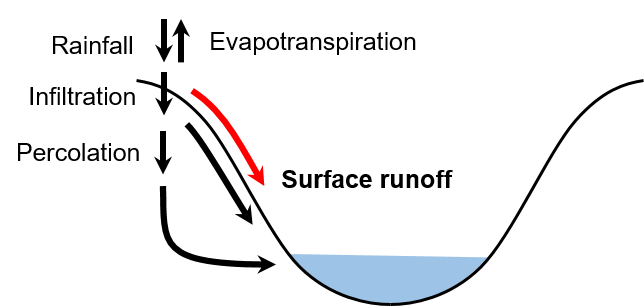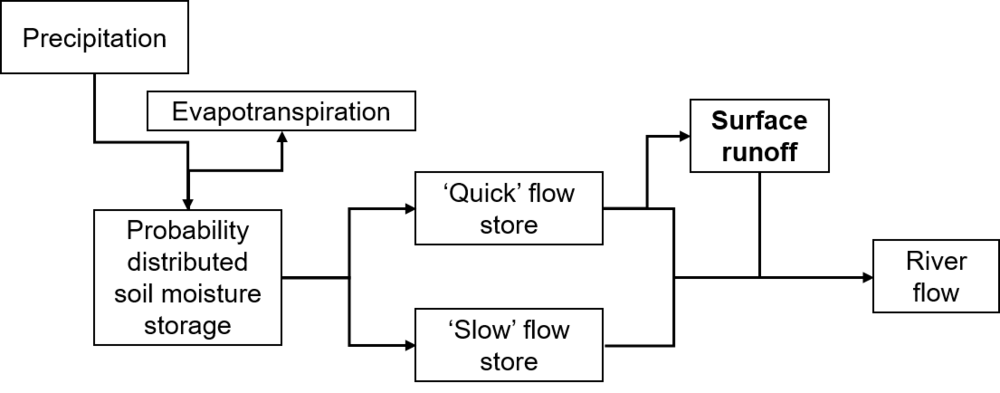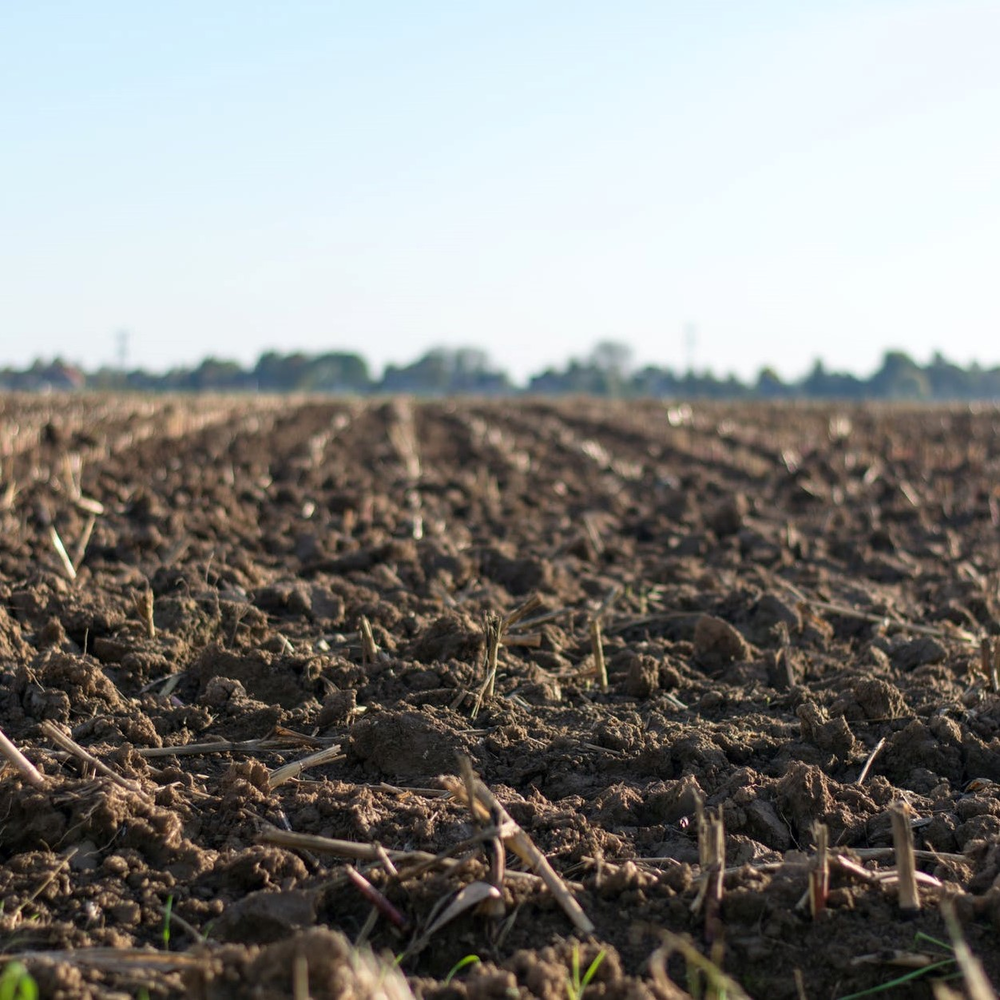Surface runoff
Surface runoff occurs when the capability of a soil to receive precipitation is exceeded. This can happen either because the rate of precipitation exceeds the rate at which the water can infiltrate the soil, or because the soil porespace is already completely saturated and cannot accept any more water.
Surface runoff can be an important process for the rapid transport of contaminants from topsoils to surface waters, since it erodes and transports surface soil to which contaminants may be adsorbed or attached.

Conceptual model of water flow pathways from soil to surface water |
Occurs in |
|
|

The surface runoff rate is computed from the output of the runoff generation scheme of the CERF (Continuous Estimation of River Flows) model (Griffiths et al., 2016). The CERF model generates two types of flow to surface waters: ’quick’ and ’slow’. The daily surface runoff rate is computed as 10% of the daily ’quick’ flow rate.
Read more |
Read also |
|
Deliverable 2.2 Spatial transport framework for NanoFASE model |
Griffiths J, et al. (2016) Continuous Estimation of River Flows (CERF). Environment Agency Science Report, SC030240. Environment Agency, Bristol, U.K |
Contact

Virginie Keller
Centre for Ecology and Hydrology (CEH), UK

